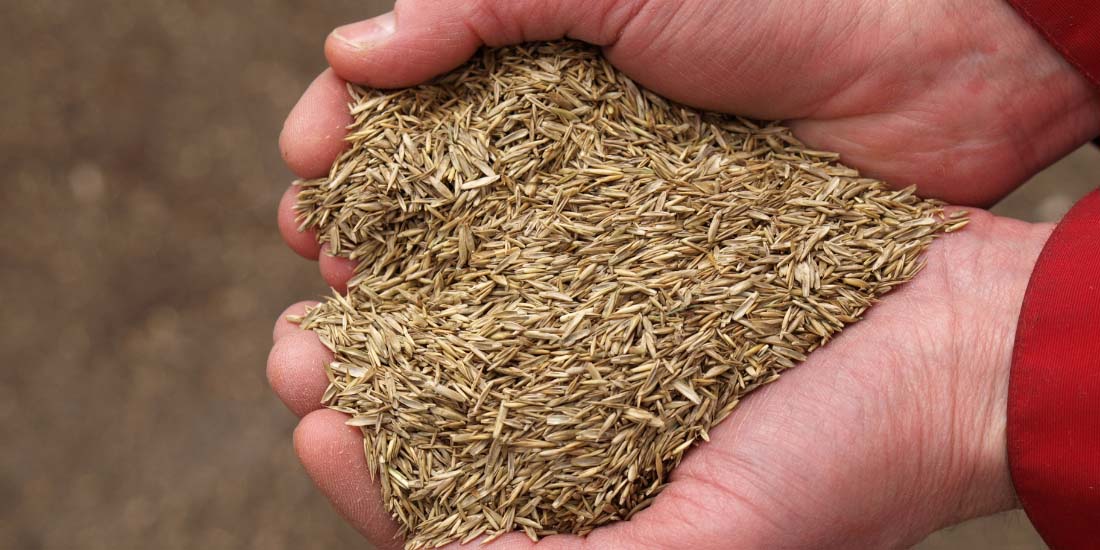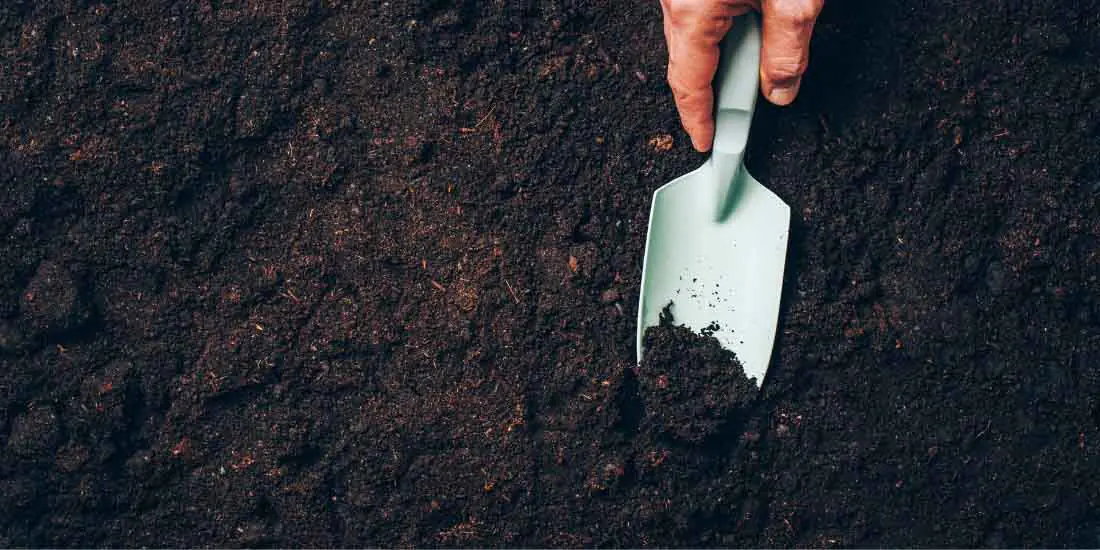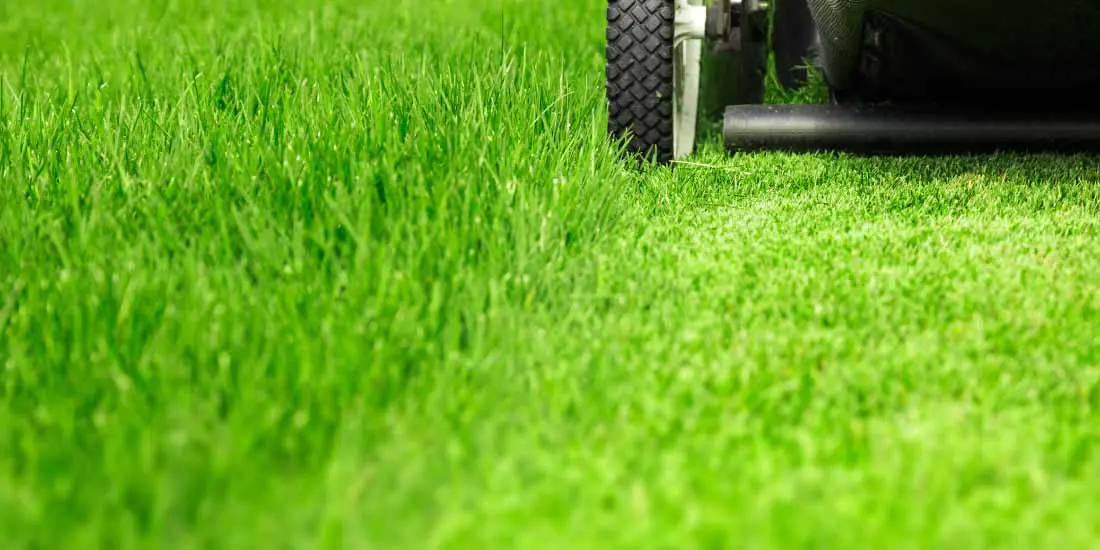Growing grass from seed

What’s required when growing grass from seed
Growing grass from seed requires prep work to get the best results, and this is easier than you might think! Most people know that grass requires three things to grow as well as it can – light, heat and water. But, if you haven’t picked the right grass seed, created the perfect seedbed, or didn’t plant in the right conditions, you won’t get the results you expected.
Luckily for you, we know exactly how you can get the garden you have always dreamed of. Follow our tips below, and you will get the perfect garden lawn on the first try!
6 steps for growing grass from seed
1 – Pick the right grass to grow in your garden
Picking the right grass seed will affect how well, thick, and lush your garden lawn grows. When creating our grass seed mixes, we thought about how differently we all use our gardens, what soil variations there are and how large trees or harsh soils can impact growth. With this in mind, we used our expert knowledge to create grass seed mixes to suit every household and all soil types. We also have specialist grass seed that grows exceptionally well in shaded lawns!
Seeds for most soils
- SUPERSTAR: Back Lawn – The ideal seed for hardwearing everyday lawns without compromising on looks.
- FAMILY: Kids and Pets – Suited to family lawns that get a lot of footfall from the whole family, including kids and pets.
- STATEMENT: Front Lawn – For an ornamental lawn that offers a picture-perfect finish that the umpires at Wimbledon would be jealous of!
- RESTORE: Self-Repair – Ideal for lawns that need a facelift and self-repairs, removing the need for overseeding.
Seed that loves to grow in shade
- STEADFAST: Shade – Ideal for lawns that get dappled shade throughout the day from overhanging trees, walls and fences.
- STEADFAST: Ultra Shade – The best option for lawns with constantly shaded areas and parts of your garden that never receive any sunlight.
Seeds for harsh soil conditions
- THRIVE: Sandy Soils – For lawns with sandy soils where most other grass mixes would struggle to grow. This seed is also drought and low-nutrient-tolerant.
- IMPRESS: Clay Master – Ideal for growing in heavy clay lawn conditions and deep rooting and has high drought tolerance.
2 – Prepare the perfect seedbed for growing grass from seed
After you’ve picked your mix, you're a step closer to growing grass from seed! And the next step is to create the perfect seedbed. By giving your grass seed the proper conditions for growing, you will be well on your way to achieving the perfect garden!

Removing weeds and moss
The first thing to do in this section is to remove all weeds and mosses from your lawn – this will ensure your grass germinates and grows well. If you only have a few weeds on your lawn, then you can remove these by hand using a trowel to dig the roots out. However, if you’re dealing with a larger number of weeds or your lawn is littered with them, then using our Feed, Weed & Mosskiller will sort the problem out!
Levelling your seedbed
By ensuring you have a level seedbed, you will be helping your grass to grow and stop patches from appearing on your lawn caused by lumps and bumps caused by uneven soil. To level a seedbed, you use a rake to break up the soil and even it all out. If you find your soil too clumpy to rake, it’s best to use a rotavator to churn up the soil so it’s easier to rake and level out.
Your soil is ready to sow grass seed once it’s fine, crumbly and level!
3 – Sow your grass seed
Sowing the seed is more straightforward than many people think it will be, but there are a few things to consider to ensure you do it right! For example, if you’re sowing a new lawn, we recommend sowing at a rate of 50g of seed per metre squared (m2), and if you’re overseeding an existing lawn, sowing at a rate of 35g m2.
Spreading the seeds evenly is important because you don’t want your seeds too close or far apart. You want to sow your seeds amongst the soil. A good rule is to sow the seeds to the thickness of three £1 coins stacked on top of each other.
4 – Watering your seeds the right way
Grass seeds need water to germinate, but you might be surprised to learn that they must be watered daily for the first six weeks to grow properly. Thankfully, we live in the UK, and nature will do the watering for you most of the time. And on days when it’s raining outside, you won’t need to water your lawn.
You should use more water once your lawn is fully established, but water it less frequently. Doing this will help encourage good root development. A good rule to follow for this is to cover your lawn with one inch of water when watering.

5 – Mow your lawn correctly
A common mistake is when people see the grass appearing and protruding out of the soil a few centimetres; it must be time to start mowing. But this is far from the truth!
We recommend you wait until your grass has grown to a height of 7cm before its first mow. If you cut your grass too soon, you will weaken it. So, by sticking to the rule of only removing a third of your mower’s blade height each time, you will help ensure your grass grows strong and healthy.
We also have a video guide on how to mow your lawn correctly (see below):
6 – Fertilising your lawn
Using fertiliser is a great way to boost your lawn and keep it looking strong – not to mention that you will be helping to recover from wear and tear while giving it increased resistance against common lawn diseases! Knowing when to use fertiliser and how to apply it will massively impact how successful the application of fertiliser will be!
All of our fertiliser mixes are made of nitrogen, potassium and phosphorus, and the levels differ depending on the mix and the time of year it’s designed to be used.
Pre-seed (before seeding to boost growth)
Quick Release: Pre-Seed boosts soil for fast establishment of new lawns and seeded areas and accelerates growth over six weeks.
First fertiliser (March – June)
Summer fertilisers are best when they prioritise nitrogen to keep your grass growing green and lush in the warmer months.
SLOW RELEASE: Spring / Summer Fertiliser is a complete feed solution for summer in one fast-acting application. Once dissolved, this fertiliser disperses throughout your soil in stages and provides a dose of nitrogen to keep it going all summer long.
Bonus feed (July – August)
You can apply a bonus application of our QUICK RELEASE: Spring / Summer Fertiliser around this time of year. This is especially beneficial when the high temperatures of summer put your lawn under stress, adding to the already increased footfall that summer garden usage brings.
Final feed (September – December)
In winter, the purpose of fertiliser is to protect your lawn from winter-borne disease and frost, and the best thing for this is when the fertiliser is high in potassium and phosphorus. This will help strengthen the roots of your lawn and harden the grass blades.
Once summer has passed, the temperatures tend to leave just as quickly. This is where pre-winter lawn care is beneficial. By aerating your lawn to help it recover from the summer’s wear and tear, you are already helping the soil breathe.
You can then apply our SLOW RELEASE: Autumn / Winter Fertiliser to give your lawn a steady feed throughout winter and give it 4-months of premium protection in the colder months.
By now, you should have a good idea of how to go about growing grass from seed, but if you have any questions, please drop us an email, and we will be happy to help!